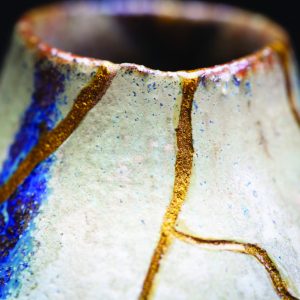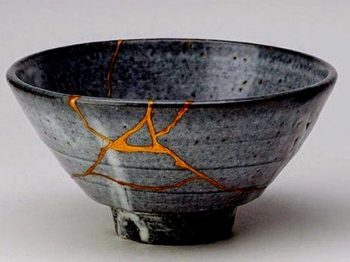Mended in Gold

By Fr Gerard Whiteford SM
Those familiar with the popular television programme The Repair Shop will know the name Kirsten Ramsay. Kirsten is one of the original experts and handles the repairs of ceramics. She is sometimes referred to as the "queen of the invisible fix" for her ability to manage a repair with such skill that the repair is indeed ‘invisible.’
There is an alternative to the ‘invisible fix’, and that is to be mended in gold!
Kintsugi is the Japanese art of putting broken pottery pieces back together with gold. The process highlights cracks, and repairs - events in the life of an object, rather than allowing its service to end at the time of its damage or breakage. Not only is there no attempt to hide the damage, but the repair is literally illuminated. The vicissitudes of existence over time could not be clearer than in the breaks, the knocks, and the shattering to which ceramic ware is subject.
 Kintsugi is the general concept of highlighting or emphasising imperfections, visualising mends and seams as an additive or an area to celebrate or focus on, rather than absence or missing pieces. The Japanese artist Makoto Fujimara, notes “the kintsugi bowl is far more valuable than it was before it was broken.”
Kintsugi is the general concept of highlighting or emphasising imperfections, visualising mends and seams as an additive or an area to celebrate or focus on, rather than absence or missing pieces. The Japanese artist Makoto Fujimara, notes “the kintsugi bowl is far more valuable than it was before it was broken.”
Individuals, and faith communities will, with some regularity, gather to celebrate a Rite of Reconciliation. The theology I grew up with (and no doubt taught and preached on many an occasion) was the theology of the Sacrament of Reconciliation as the ‘invisible fix’. All too frequently I/we see this Sacrament as a removal of/getting rid of/making clean again. Might I suggest that at the heart of the theology of this Sacrament, and indeed at the heart of being redeemed in Christ is ‘being mended in gold’, and as a result being more valuable!
 Entries(RSS)
Entries(RSS)